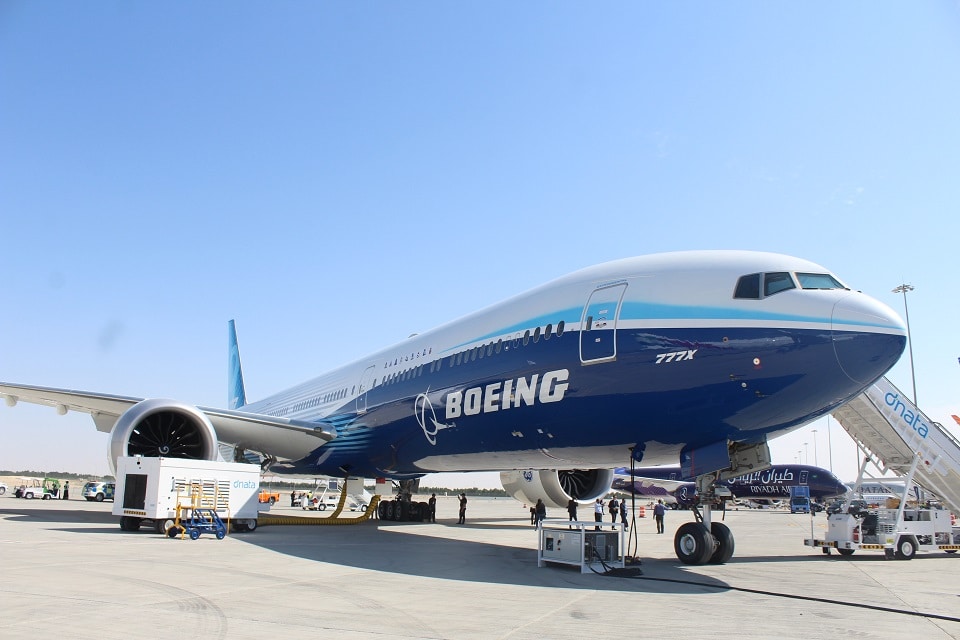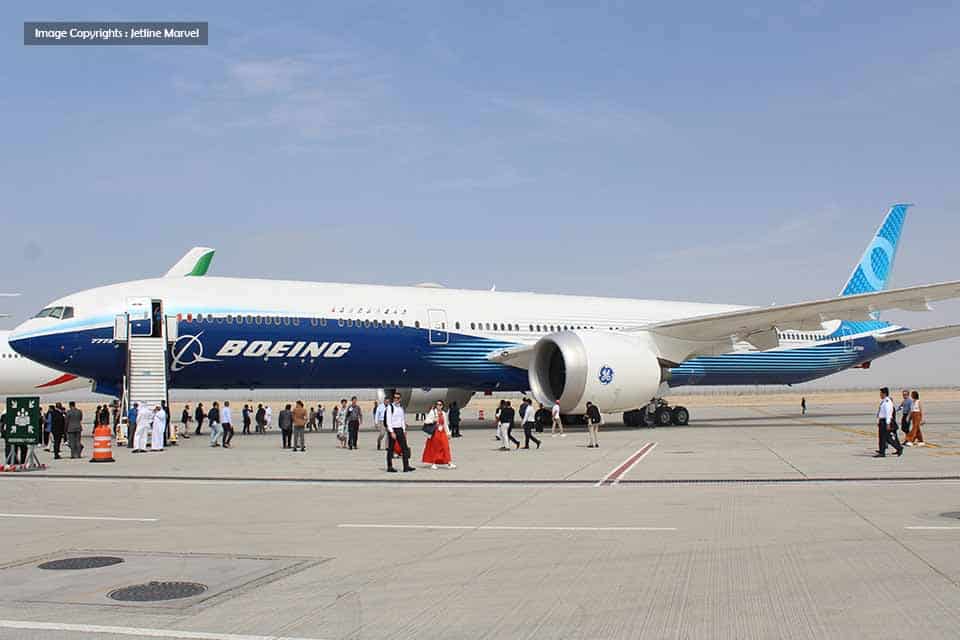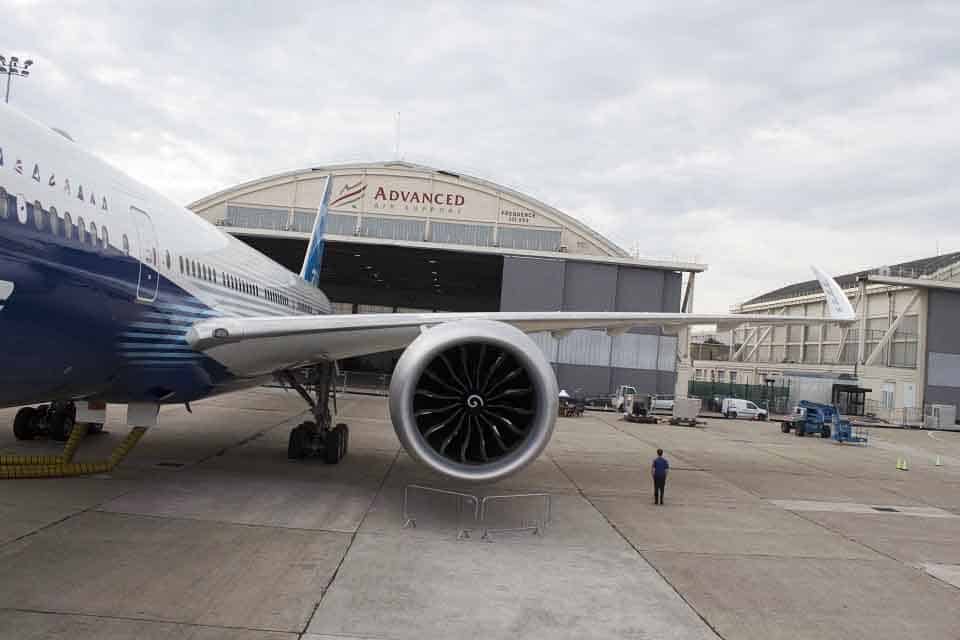Aviation
Why the Boeing 777X Is Facing Delays: Boeing 777X vs. Airbus A350 certification

Airlines are eagerly awaiting the highly anticipated Boeing 777X, but its delivery dates have been repeatedly delayed. The aircraft completed its first flight in January 2020, yet it is still not ready for passenger service.
Boeing has faced significant criticism, particularly regarding the quality of the Boeing 737 MAX, following two major crashes that raised serious concerns about the aircraft’s safety. Since then, all Boeing products have been under intense scrutiny..
The Boeing 777X is a newer variant of the earlier 777 models and is slightly larger than the Boeing 787 and Airbus A350 in terms of capacity and range.
With over 450 orders for the 777X, the aircraft is popular, though not as much as the A350 or 787, which offer lower capacity but are still long-range and fuel-efficient. Emirates is the largest customer for the 777X, with 205 of these jets on order, intended to replace the retiring Airbus A380s.
Boeing 777X: Major Issues Leading to Delayed Certification and Delivery”
The Boeing 777X has experienced significant delays due to a series of issues and certification hurdles. Here are the major contributing factors:
- Engine Issues: The GE9X engines, the largest ever installed on a commercial aircraft, have faced durability problems, which have delayed certification.
- Test Failures: During the certification process, a door on the 777X static test airframe blew off during an ultimate load test conducted in the presence of FAA inspectors. This test involves stressing the aircraft beyond normal operating limits.
- Supply Chain Disruptions: The COVID-19 pandemic severely impacted the supply chain, leading to delays and a $6.5 billion charge due to updated type certification requirements and pandemic-related disruptions.
- FAA Certification Delays: On June 27, 2021, The Seattle Times reported an FAA letter dated May 13 that delayed type certification until mid to late 2023, with deliveries pushed to 2024.
- The FAA cited a serious test flight incident involving an “uncommanded pitch event” and a lack of “design maturity,” noting that the technical data required for certification indicated the aircraft’s design was not yet mature.
- Engine Technical Issues: In November 2022, it was revealed that a GE9X engine on one of the four test 777-9s suffered a technical issue on October 6. Boeing subsequently paused the test program while GE investigated the problem.
Compared to the Airbus A350, the Boeing 777X has faced a more extended certification process.
The Airbus A350 made its first flight on June 14, 2013, and entered service in 2015. The European Union Aviation Safety Agency (EASA) issued its certification within two months, followed by FAA certification.
The A350 was notable for its use of composite materials, which significantly reduced fuel consumption and cabin noise, showcasing many aerospace innovations from Airbus.
In contrast, the Boeing 777X has encountered significant delays in its certification process. The aircraft has faced various challenges, partly due to the issues with the Boeing 737 MAX, which have affected Boeing’s overall testing and certification processes.
However, since July 14, 2024, the 777X has resumed its certification tests, undergoing a range of evaluations. Despite these efforts, the 777X’s certification timeline has been impacted by the lingering issues related to the 737 MAX.
Here are the latest updates on the Boeing 777X:
- Prototype Testing: Boeing has constructed four prototype aircraft, which are currently undergoing various tests.
- High Altitude Testing: On August 2, WH003/N779XY arrived at Toluca, Mexico, for high-altitude performance testing. Toluca Airport, situated at about 8,465 feet (2,580 meters) above sea level, provides a challenging environment to assess the aircraft’s performance in thinner air.
- This testing is crucial for evaluating engine performance, aerodynamics, and overall aircraft handling under these conditions.
- FAA Certification Test Flights: WH003/N779XY landed at Colorado Springs Airport on July 29 for FAA certification test flights. On July 18, the aircraft successfully completed its second FAA certification test flight, lasting 3 hours and 20 minutes.
- During this flight, the team performed an airspeed calibration test to ensure the accuracy and reliability of the aircraft’s speed measurement systems.
- Nacelle Cooling Testing: WH002/N779XX has departed from Kailua-Kona for nacelle cooling testing. This test is part of the ongoing efforts to ensure optimal engine and nacelle performance.
The Boeing 777X incorporates advanced composite materials extensively in its wings, which feature the longest span of any commercial passenger aircraft. Its innovative folding wingtips enhance operational flexibility, allowing it to fit into constrained airport spaces.
The aircraft is powered by the GE9X engine, designed specifically for the 777X, providing superior aerodynamics and optimized fuel efficiency.
The cabin design, inspired by the Boeing 787 Dreamliner, includes wider windows, improved pressurization, mood lighting, and ergonomic features for passenger comfort.
Lufthansa planned to debut its new Allegris first class and Allegris business class on the 777X. However, due to the aircraft’s delays, these features are now being introduced on A350s and 787s first.
On the other hand, Emirates is eagerly awaiting the 777X, as it will play a key role in the airline’s plans to phase out the Airbus A380 in the future.
According to Boeing’s statement, the 777X is expected to receive certification by the end of 2025. The delay is attributed to the company’s commitment to ensuring the highest quality and reliability of the aircraft’s performance.
The GE9X engine is undergoing rigorous testing, including extreme cold and hot environments, as well as high-altitude conditions. Additionally, various improvements are being integrated into the aircraft to enhance its overall performance and reliability.
Aircraft comparisons between the comac C919 and the B737 max 8:Click here

Airlines
Air India to Launch aircraft maintenance training institute in Bengaluru

Air India, one of India’s leading global airlines, is set to establish a Basic Maintenance Training Organization (BMTO) in Bengaluru.
This institute will offer a comprehensive Aircraft Maintenance Engineering (AME) program certified by the Directorate General of Civil Aviation (DGCA). The program will follow an integrated 2+2 year structure, combining classroom learning with practical, hands-on training.
This initiative is part of Air India’s broader goal of creating a robust aviation ecosystem in India. With plans to expand its fleet and strengthen its operations, the airline aims to build a skilled workforce of maintenance engineers, making the organization self-reliant while supporting its ambitious transformation journey.
This country tops visa rejections in the popular Schengen countries
To bring this vision to life, air india has partnered with Bengaluru Airport City Limited (BACL), a subsidiary of Bangalore International Airport Limited (BIAL). Together, they will develop a state-of-the-art facility spanning 86,000 square feet at Bengaluru Airport City.
This purpose-built campus will feature modern classrooms, well-equipped laboratories, and qualified trainers to deliver world-class education and training. The institute is expected to become operational by mid-2026.
The BMTO will be located close to Air India’s new 12-bay Maintenance, Repair, and Overhaul (MRO) facility, also set to open in Bengaluru by early 2026. The AME program will begin with two years of academic coursework, followed by two years of practical training at the MRO, ensuring students receive hands-on experience adhering to industry standards.
Sanctions & Engine Issues Ground Half of Russia’s A320neo fleet
In the meantime, Air India has introduced a Cadet AME program in collaboration with reputable institutions in Bengaluru and Hyderabad.
This ensures continuity in its commitment to developing skilled aircraft maintenance engineers while the BMTO facility is under construction. The program also allows students to pursue a bachelor’s degree through university partnerships, enhancing their career and academic opportunities.
With this initiative, air india plane aims to address the growing demand for skilled professionals in aircraft maintenance and engineering, air india new planes contributing to the development of India’s aviation sector and creating specialized career paths for aspiring engineers.
-

 Aviation2 months ago
Aviation2 months agoMicrosoft Flight Simulator Raises $3 Million to Bring Back the An-225 Mriya
-

 Airlines2 months ago
Airlines2 months agoQatar Citizens Can Travel to the United States Without a Visa
-

 Aviation2 months ago
Aviation2 months agoQatar Airways bans these new Electronic Devices on plane
-

 Airlines2 months ago
Airlines2 months agoJapan Airlines Rolls Out Free Domestic Flights to International Passengers
-

 Defence2 months ago
Defence2 months agoWhich Country Has the Largest Fleet of Fighter Aircraft?
-

 Airport2 months ago
Airport2 months agoWestern Sydney Airport Welcomes Its First Plane After 6 Years of construction
-

 Travel2 months ago
Travel2 months agoQatar Airways Launches Four Additional Flights from Amsterdam
-

 Aviation2 months ago
Aviation2 months agoDid you know ? Once Boeing 747 carried 1088 passenger in 1991










